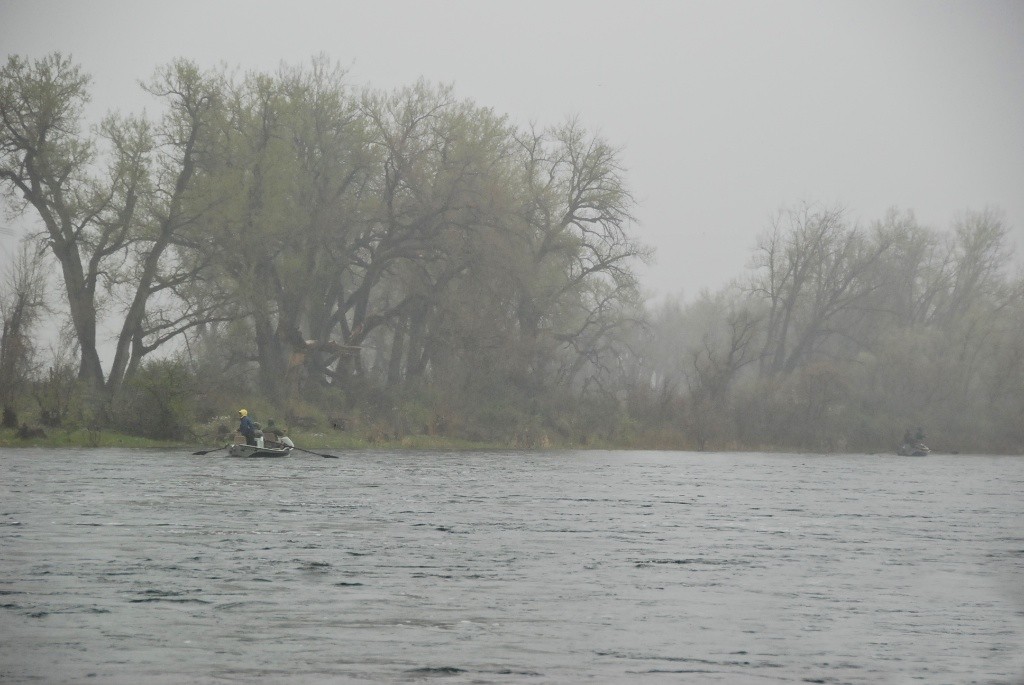A Soggy Spring

Here’s where we’re at: snowpack is at 160% in our drainage and it’s raining and snowing in the high country right now. Currently, river flows below Afterbay Dam are at 8,000 cfs. We expect this to go up to 8,500 cfs in the next few days. At a meeting on Wednesday (5/18), Dan Jewel, Area Manager for the Bureau of Reclamation’s Billings, Montana office, told us that 8,500 cfs is the upper limit of projected flows. This projection, however, is contingent on future weather events and the manner in which runoff occurs. If it remains cool throughout the spring, this will buy us more time to evacuate water. If our weather gets hot quickly, inflows into the lake will increase dramatically, and the lake will fill rapidly. In this scenario, we may see flows increase to 10,000 cfs or more.
Fishing has remained excellent. Trout are eating sowbugs, Baetis nymphs, and midge pupa. Stomach samples reveal black, brown, and cream-colored midge pupa primarily, with a few red ones as well. We’ve been fishing 3X tippet to the first fly, and 4X to the bottom. This allows us to apply plenty of pressure to the fish when trying to pull them out of the heavy current. I use tungsten putty to weight the leader, but split shot is tough to beat when you need to get down fast. If you’re boat fishing, one 3/0 and one BB is fairly standard. Dry fly fishing has been surprisingly good in light of conditions. There are plenty of insects in the afternoon, and nice pods of fish in selected areas. I imagine dry fly fishing will fall off when the sun comes out. As a rule, the fast current tends to keep fish feeding subsurface. You have to look a little harder for out-of-the-current places where fish are able to rise without expending too much energy.
High-water years, as long as they’re not too excessive, tend to be good for the fish population and hatches long-term. Historically, fish numbers rise and fall in relationship to water flows. Just as a large pasture can support more cattle, a larger volume of water increases available spawning habitat and rearing areas for small fish. The amount of food is generally not the limiting factor for Bighorn River trout.